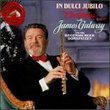| All Artists: Antonio Vivaldi, Andrea Marcon, Giuliano Carmignola, Venice Baroque Orchestra Title: Late Vivaldi Concertos: RV386 / RV235 / RV296 / RV258 / RV389 / RV251 - Giuliano Carmignola / Venice Baroque Orchestra / Andrea Marcon Members Wishing: 0 Total Copies: 0 Label: Sony Release Date: 10/1/2002 Genre: Classical Styles: Chamber Music, Historical Periods, Classical (c.1770-1830) Number of Discs: 1 SwapaCD Credits: 1 UPC: 696998773325 |
Search - Antonio Vivaldi, Andrea Marcon, Giuliano Carmignola :: Late Vivaldi Concertos: RV386 / RV235 / RV296 / RV258 / RV389 / RV251 - Giuliano Carmignola / Venice Baroque Orchestra / Andrea Marcon
CD DetailsSimilarly Requested CDs
|
CD ReviewsWonderful ARTURO CAMACHO | Caracas, Venezuela | 12/13/2004 (5 out of 5 stars) "I've always thought that there should be ratings for the music selection on the album, the interpretation and the music itself, but in this case I don't care because I would rate all of these as 5 stars!! Besides the excellent interpretation of Carmignola and the Venice Baroque the selection they made was excellent. I'm a Vivaldi fan, and I've been listening and collecting Vivaldi concertos for more than 20 years and own more than 200 of them (I have an excellent catalog cross-reference in a spreadsheet if anyone is interested in cataloging unknown Vivaldi work). A good word to describe the Vivaldi music in this album is MATURENESS. Believe me, it is not the usual Vivaldi we are used to. These are rare concertos because at it's latest years, Vivaldi didn't sold his concertos to the general public through the usual music publishers, instead, he prefered to sell it privately and exclusively to several high society members. So these concertos are not as well known as those we are used to listen. The quality of Vivaldi composition is superb, you will notice this specially in the slow movements which are beatiful and very well worked (RV235 Adagio is exquisite). I bought both Carmignola's "Late Vivaldi Concertos" and I'm simply enlighted. I recommend the two of them. " Carmignola and Marcon continue to excel Ivan Bútora | 12/25/2002 (5 out of 5 stars) "...Let me tell you that I was at a live performance by Carmignola at the Kennedy Center in DC, where one of the works that they performed was concerto RV 177 (this one is on the first disc of late violin concertos with Carmignola/Marcon). It sounded very close to what you hear on the CD. This being said, there is no reason to think that the concertos on the present recording are ruined by Sony's sound techniques. Yes, indeed sometimes the ends of phrases cannot be heard very distinctively, but this is likely because Carmignola plays it that way on purpose. Maybe Sony does make the violin sound more "silky" than it would be live, but in my view this is a very minor objection to raise against the recording. As for the romantic-sounding slow movements, I wouldn't claim right away that they're romantic. They certainly are emotional, as they should be. Nobody knows exactly how it was performed in Vivaldi's day, but I think that Carmignola/Marcon have presented viable and excellent interpretations so far. Don't forget that musicians should on one hand try to come as close as possible to the composer's intentions, but on the other hand musicians should live with the music they play and put their own personality into it. The artistic choices made in this recording are fully convincing. Carmignola and Marcon continue their already significant enrichment to Vivaldi interpretations and recordings by another awesome CD. And yes - you do have to listen to this CD more times, because some of the themes in these concertos might not seem immediately captivating, but you should fall in love with them after listening a couple of times. After having listened many times you will realize why, within Vivaldi's concert output, the term "late violin concertos" makes sense. The solo lines are very intricate compared to some earlier Vivaldi's concertos. The solo, in the music itself, but also the way Carmignola presents, it, is truly a solo here - the ideas are very strong, and Vivaldi uses some very interesting rhythmic alterations, as well as contrasting contours, moods and timbre. Each one of these pieces truly has a certain atmosphere, which is in fact very well defined, so these concertos are very far from the claim about Vivaldi writing the same thing 400 times. Carmignola and Marcon are great at working with time, they are not afraid to slow down and take pauses. Precisely this is one of the features that define these concertos and this recording. When you compare this recording to the 2001 late violin concertos, I think you will find that the concertos here are subtler, but also more original and daring in many respects. Carmignola and Marcon have so far done work of exceptional quality and of great benefit to Vivaldi and his music in a short period of time. Ultimately this recording will have to be considered sooner or later as ground breaking in defining a new standard in performance of baroque music and the interpretation of Vivaldi's works, as well as revealing to us much more about Vivaldi than we thought we knew." Challenging what we know about Vivaldi's concertos Russ | Richmond, VA | 08/26/2006 (5 out of 5 stars) "First, I should mention that I typically purchase a CD for the music on that CD, and not for the artist playing the music. I am usually a little put off by artist-centered productions, and that is what we have here. There are no fewer than three full-sized photographs of Giuliano Carmignola included within the program notes, and you can double that number if you include the advertisements for previously released discs included on the last page of the booklet. However, I won't let that bias me in writing this review.
The Music: It is important to note that these concertos were composed by Vivaldi (1678-1741) late in his career. Do not try to associate any type of chronology to the RV numbering of Vivaldi's works, as this numbering represents a simple cataloguing. You might be wondering, what makes a "late" Vivaldi concerto different from any other Vivaldi concerto. Well, the later concertos strike me as bolder and less formulaic, and are filled with rhythmic and harmonic surprises not found in the earlier concertos. For instance, the solo part is more than just busy sixteenth note writing (of course there is some of that, though), but rather it is a combination of arching lyrical lines and virtuosic passages of invigorating, swift figurations, with plenty of accents and the occasional double stop to add flavor. The unusual harmonic progressions present in these concertos are also rather striking. Some of these harmonic intricacies are subtle (Track 13), while others boldly proclaim themselves (ex: Track 1). Additionally, the "late" Vivaldi concertos appear to be longer than his published concertos (the ones with the opus numbers). Surprisingly, a couple of the movements exceed five minutes. The concertos performed here were well chosen to offer contrast. Compare the contemplative conclusion to RV 389 (Track 15) against the exuberant conclusion to RV 251 (Track 18), as an example. Three of the six concertos are in a minor key. As these concertos are a bit more complex than the average baroque concerto, my initial reaction was that the ritornellos were not as memorable as would be expected for Vivaldi. But after a couple of listenings, I was following along without difficulty. To the best of my knowledge, the six concertos presented here are not available elsewhere, so there is little risk of acquiring duplicate repertoire. The Performance: Of course the violin playing by Carmignola is excellent and quite personal (one should hope so, as his name is about three times as large as Vivaldi's on the CD cover!). As the program notes explain, a "rediscovery" has taken place over the past several years, where highly trained baroque instrumentalists (i.e. Carmignola) have perfected the techniques used by instrumentalists of Vivaldi's time that produced sharp attacks and varied vibration. Accordingly, in contrast to earlier performances of Vivaldi's concertos, the soloist and ensemble vary their attacks to provide contrast between the different portions of the movements. As an example, listen to the bold bow strokes and crescendos of the lower strings in Track 3. Additionally, the ensemble and soloist generously sprinkle in rallentandos and subito dynamic changes throughout the concertos. Of course this boldly interpretative style may not be to everyone's taste; however I think it works well here and makes for an interesting listening experience. Also notable is the inclusion of several basso continuo instruments, including an additional harpsichord, an organ and a lute. I find the use of the lute, in place of the harpsichord, in the softer sections provides a compelling contrast in texture. In addition to providing contrast, the additional instruments are often used together in the ritornellos to add more meat to the ensemble (ex: Track 4). The Conclusion: This is not a conventional performance of run-of-the-mill Vivaldi concertos. These highly enjoyable and creative concertos are filled with twists and turns that make it hard to believe this is the same Vivaldi we all know and love. The playing by the Carmignola and the Venice Baroque Orchestra is fantastic. Highly recommended. 71:41" |

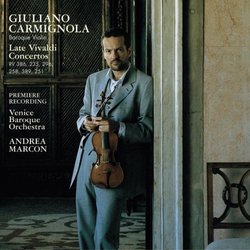
 Track Listings (18) - Disc #1
Track Listings (18) - Disc #1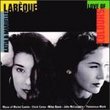
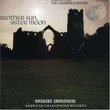

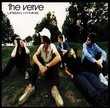
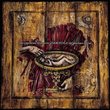

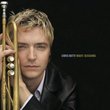
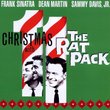
![Across The Universe [Deluxe Edition]](https://nationalbookswap.com/cd//m/51/1251/1241251.jpg)
